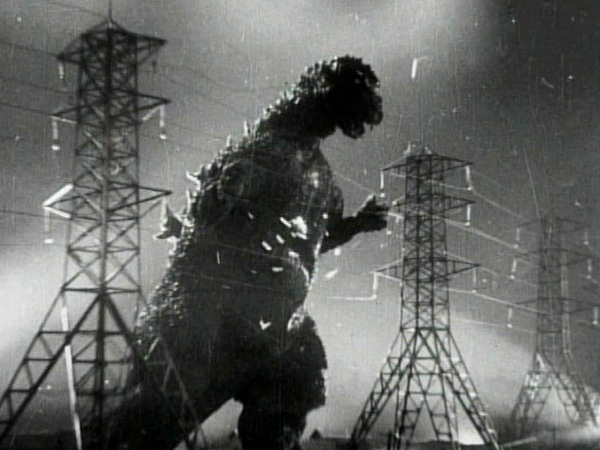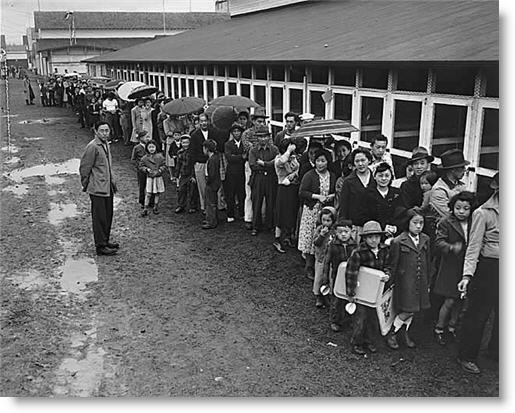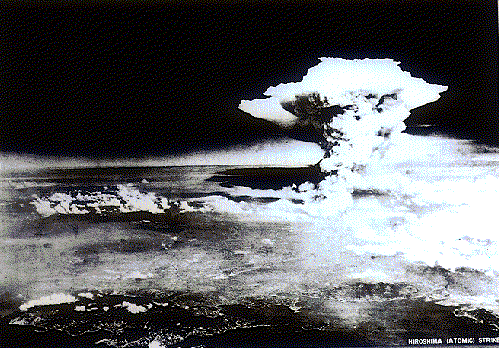GODZILLA, KING OF THE MONSTERS! AND THE 1950s
Godzilla, King of the Monsters! was a 1956 movie, directed by Ishirô Honda and Terry O. Morse. The movie took place in Japan and began at an emergency hospital in Tokyo where we meet reporter Steve Martin, played by Raymond Burr. Martin was assigned by United World News to cover the strange destruction and sinking of ships in the Sea of Japan with no warning.
During a flashback, Martin travels to a remote island where a dead body had washed up and learned that the inhabitants of the island believe that there is a type of monster that lives in the sea. Later on Dr. Kyohei Yamane, played by Takashi Shimura, travels back to the remote island with his daughter Emiko Yamane, played by Momoko Kôchi, and Hideto Ogata, played by Akira Takarada, to ingestigate, and sees the monster as It attacks he village. | 5.  |
The
monster is unable to be killed by any military force, but then disappears back
into the see. Emiko’s ex-boyfriend, Dr. Daisuke Serizawa, played by Akihiko
Hirata, had developed a formula that was capable of destroying all oxygen in
water which could strip the flesh and organs of any animal that comes in
contact with it. Emiko believed that this formula was the key to destroying the
monster they called Godzilla. Serizawa
swam down to the bottom of the ocean and cut his own lifeline to erase all knowledge
of this formula, and released it on Godzilla. The formula worked and resuced
Godzilla to a skeleton.
Right after World War II, Japan and the United States remained closely connected because Japan had to rely on the U.S. for economic and political support while they were rebuilding their devastated country. However, as Japan regained their strength, they were easily able to become more independent and trade with the U.S. greatly improved. During the war, the United States was reliant on the wartime economy and the focus on investing in the production of military weapons. Their decision to drop bombs on Japan was directly reflective of the United States desire to “flex their muscles” and show their strength as well as put an end to the war officially. They knew that by dropping the bombs, the Japanese would surrender and need to focus more on cleaning up themselves instead of spending efforts on fighting the U.S.
6.  | Throughout the war, the United States continuously held Japanese-Americans in internment camps and generally negatively portrayed them in ass aspects of American life. This set the stage for tensions between the two nations for a long period to come. But through the American adaption of Godzilla, it was the American people’s way of sort of apologizing for continuously debasing the Japanese people. It was the first American film that put a Japanese character in the spotlight and that glorified them as being the hero. This was important because it proved that Americans were not as against the Japanese as they used to be and were ready to, in a small way, move forward in their relationship as nations. |
One theme that characterizes Godzilla, King of the Monsters! is that of atomic bomb testing. In
1945, the first atomic bomb was dropped over Hiroshima
in Japan by the United States.
Not only does the dropping of atomic bombs have immediate ramifications such as
death and destruction to the environment, it had many affects that are long
lasting. The radioactivity released can cause cancer as well as other serious
health problems for people that were exposed to it. The bombing of Hiroshima has since caused 264,000 deaths and the second
bombing of Japan at Nagasaki has since caused
150,000 deaths. | 7.  |
Since these bombings, Japan has entered into a contract saying that they will not possess, create or use nuclear weapons. Nuclear weaponry and the use of atomic bombs obviously had an effect on the Japanese culture because Godzilla, originally a Japanese movie, directly reflects the fear people had of how much their lives would be affected by the use of radioactivity. The movie depicts the monster being awaken from being frozen under water after being exposed to radioactivity. The creators of the movie took the Japanese fear of being negatively affected by the use of nuclear weapons and turned it into a dramatized version of what people actually believed could happen. In truth, the effects of the atomic bomb dropping would have effects on the country of Japan for many years to come and not just immediately. The citizens were now plagued with the effects of radiation-caused illnesses, and especially a fear of a nuclear war about to erupt.